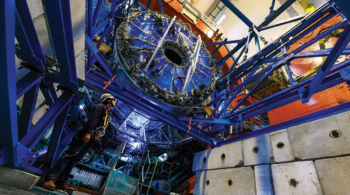 Read article 'SLAC B-Factory comes up to speed'
Read article 'SLAC B-Factory comes up to speed'
SLAC B-Factory comes up to speed
Shortly after the dedication of the PEP-II B-Factory at the Stanford Linear Accelerator Centre on 26 October, a team led by John Seeman resumed the task of commissioning the new electronpositron co...





